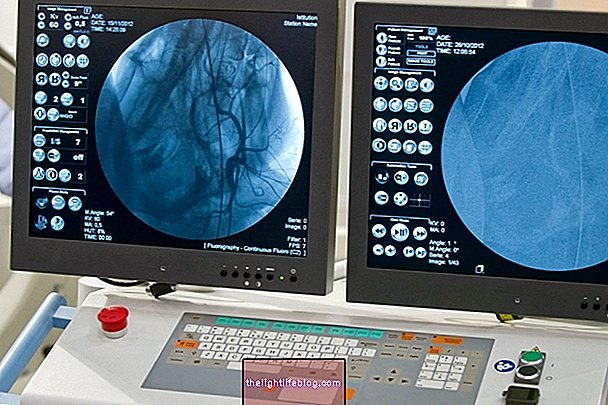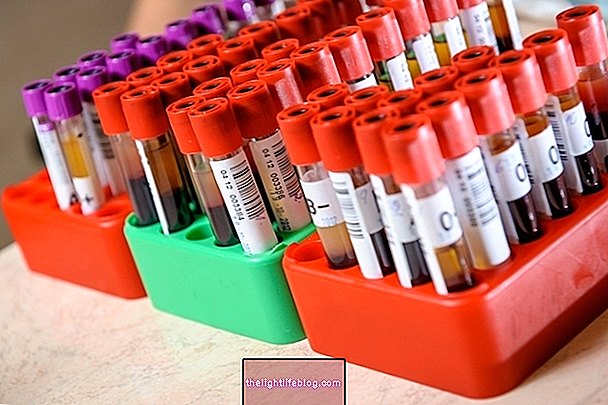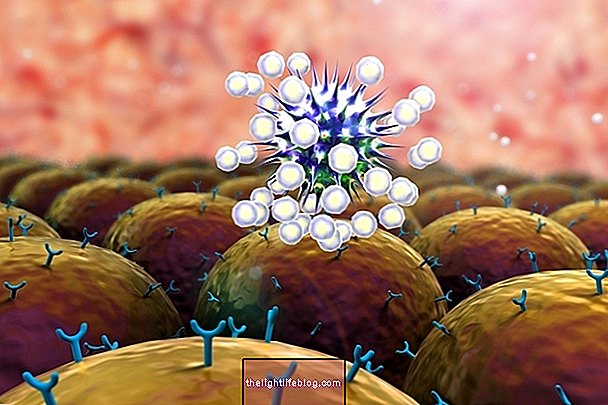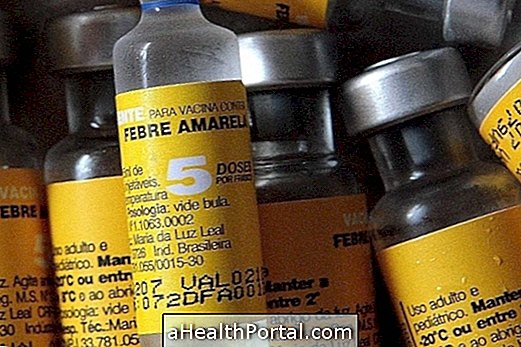Arteriography, also known as angiography, is a diagnostic tool that allows you to observe the circulation of blood and blood vessels in a specific region of the body, so that you can identify possible changes or injuries, which are causing certain symptoms.
The regions in which this test is most used are the retina, the heart and the brain and, in order to be able to perform it, it is necessary to use a contrast agent, which makes the blood vessels more visible.

How the exam is done
The examination methodology varies according to the region to be analyzed.Before starting the exam, local anesthesia or sedation is administered and then a thin tube is inserted into an artery, usually located in the groin, which is sent to the region to be analyzed, where a contrast substance is injected, and then the respective images were collected.
During the exam, the doctor can take the opportunity to remove clots, perform an angioplasty, which consists of dilating a narrowed blood vessel, or inserting a mesh into the vessel, so that it remains functional. See how angioplasty is performed.
The procedure takes about 30 minutes to 2 hours and usually does not cause pain.
In what situations should be done
Arteriography is an exam that is usually indicated in the following situations:
- Coronary heart disease, such as angina;
- Aneurysms;
- Atherosclerosis;
- Stroke;
- Myocardial infarction;
- Gangrene;
- Organ failure;
- Macular degeneration;
- Diabetic retinopathy.
How to prepare for the exam
Before the test, the doctor may recommend suspending any treatment that involves drugs, such as antiplatelet agents or anticoagulants, which interfere with blood clotting.
In addition, you should not eat or drink after midnight on the day before the exam.
However, in some cases, this examination may have to be performed on an emergency basis, and it is not possible to prepare in advance.
What are the risks of the exam
Arteriography is relatively safe and complications are rare. In some cases, bruising or bleeding may occur in the region and, more rarely, infections or allergic reactions.
Was this information helpful?
Yes No
Your opinion is important! Write here how we can improve our text:
Any questions? Click here to be answered.
Email in which you want to receive a reply:
Check the confirmation email we sent you.
Your name:
Reason for visit:
--- Choose your reason --- DiseaseLive betterHelp another personGain knowledge
Are you a health professional?
NoMedicalPharmaceuticalsNurseNutritionistBiomedicalPhysiotherapistBeauticianOther
Bibliography
- WORLD FEDERATION OF SOCIETIES OF ANAESTHESIOLOGIST. Coronary Arterial Angiography. 2017. Available at:. Accessed on Dec 11, 2019
- SOLACI. Quantitative coronary angiography: methods and applications . Available in: . Accessed on Dec 11, 2019
























